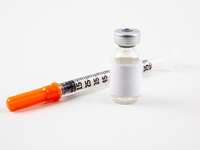- Categories :
- More
8 Ways to Keep Skin Looking Younger

It’s time to shed light on sun-driven skin cancer.
Safeguarding skin is not just a vanity project to postpone wrinkles, brown spots, sagging or other signs of premature aging. It can save your life.
Protecting your hide–the body’s largest organ–is a year-round need, says Aaron K. Joseph, MD, dermatologist and skin cancer specialist in Mohs procedure affiliated with Memorial Hermann Southeast Hospital.
More Americans are diagnosed with skin cancer each year than all other cancers combined, reports the American Cancer Society. One in five will develop skin cancer by age 70. And the most lethal form, melanoma, kills a person every hour.
Here’s some common sun-protection myths that need to be cleared up.
Myth: All Clothes Shield You.
Truth: Sun filters through loosely woven fabrics.
It pays to buy clothes made specifically to spare you. Seek a UPF, or ultraviolet protection factor, of 30 or higher. That means only 1/30th of UV radiation pierces the garment. Also, hats should have a 4-inch or wider brim to shade you.
Protective clothes are vital for babies under six months old when clothes, not lotions, are recommended, due to chemicals that might irritate their skin.
Myth: Sunglasses Are Just a Fashion Item.
Truth: “Glasses should be close-fitting to the face and large enough to hide eyes and brows,” Dr. Joseph says. Think old-school Audrey Hepburn or Jackie Onassis, not new-school Rihanna or Kendall Jenner, who now rock skinnier shades.
But do not assume all sunglasses are protective. Tags should indicate they block ultra-violet rays 100%.
Myth: Only Your Face Needs Protection.
Truth: People often forget ears, lips, the tops of their feet and the back of their neck and hands.
“Even my most diligent patients may forget the back of their hands or their lips,” Dr. Joseph says. “And a lip balm with SPF of 4 isn’t adequate. Look for SPF of 15 or higher.”
Use broad-spectrum sunscreen that targets both UV-A rays, which cause wrinkles and brown spots, and UV-B rays, which can cause skin cancer.
Myth: Your Sunscreen Bottle Should Last All Summer.
Truth: You should be using an ounce – the size of a shot glass – each time you apply it. And you should run out regularly.
“Research shows most people underestimate how much they need and use one-third what’s needed. Most people use less than a tablespoon,” Dr. Joseph says.
Myth: When It Comes to Slathering on Sunscreen, As With Vitamins, Once a Day Is Sufficient.
Truth: “You should be reapplying sunscreen every two hours – or more,” Dr. Joseph says. “You sweat it off, wipe it off, or it wears off and its powers degrade. You can’t put it on at 7 a.m. and forget about it. And any time you go into water, you need to reapply. There’s no such thing as waterproof sunscreen.”
Myth: You Only Need Sunscreen on Vacation, at the Beach and on Bright Sunny Days.
Truth: Don’t let clouds cloud your judgment. Sunscreen should be worn year-round, even on overcast days. 80% of UV-A rays pierce clouds. “Just because you can’t see sun doesn’t mean the damaging UV rays aren’t there,” Dr. Joseph says.
Myth: Sun is Sun, With the Same Intensity From Sunrise to Unset.
Truth: Seek shade in peak hours, from 9 a.m. to 3 p.m., when rays are four times harsher, Dr. Joseph says.
Myth: The Darker You Are, the Safer You Are.
Truth: Anyone of any color can get cancer – and not only where it’s visible. Cancer can sprout on your ears, mouth, nail beds, palms and soles. A dermatologist should examine you yearly for skin cancer.
And you and your mate (marital or friendship) should spot-check each other regularly for melanoma’s ABCDE warnings: A for asymmetry, when half a mole doesn’t match the other; B for border, as in ragged edges; C for color, or a motley mix; D for spots spreading wider than a pencil eraser’s diameter; and E for evolving spots that seem to expand visibly month to month.


















